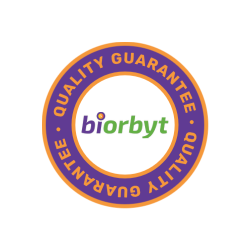You have no items in your shopping cart.
Cart summary

Murine Macrophage Inflammatory Protein-1 gamma/ CCL9/10 (rMuCCL9/10)
Catalog Number: orb1494921
| Catalog Number | orb1494921 |
|---|---|
| Category | Proteins |
| Description | Macrophage Inflammatory Protein-1 gamma (MIP-1 gamma), also called MIP-2, belongs to the β (or CC) intercrine family of chemokines. It is further classified as a member of the NC6 or six cysteine-containing CC subfamily of chemokines. This subfamily contains four N-terminally extended chemokines, two human (CCL15 and CCL23) and two mouse (CCL9 and CCL10). Chemokines are known to undergo proteolytic processing to generate multiple isoforms. NC6 chemokines are usually only marginally active at full length, but are converted to highly active forms upon Nterminal truncation. Mature CCL9, in the presence of inflammatory fluids, is naturally truncated by 28, 29 or 30 aa at the N terminus, generating a highly active, 8 kDa, 71-73 aa CCR1 ligand. In contrast, other CCR1 ligands, CCL3/MIP1α and CCL5/RANTES, lose their potency when proteolytically processed. CCL9/10 is constitutively secreted, and circulates as a full length molecule. Any onset of inflammation with subsequent enzyme release may act on local NC6 chemokines, generating early, potent leukocyte chemoattractants. |
| Form/Appearance | Sterile Filtered White lyophilized (freeze-dried) powder. |
| MW | Approximately 11.5 kDa, a single non-glycosylated polypeptide chain containing 101 amino acids. |
| Protein Sequence | QITHATETKE VQSSLKAQQG LEIEMFHMGF QDSSDCCLSY NSRIQCSRFI GYFPTSGGCT RPGIIFISKR GFQVCANPSD RRVQRCIERL EQNSQPRTYK Q |
| Source | Escherichia coli. |
| Biological Activity | Measured by its ability to chemoattract human CCR1 transfected BaF3 mouse proB cells. The ED50 for this effect is typically 0.002-0.01 μg/mL. |
| Endotoxins | Less than 1EU/μg of rMuCCL9/10 as determined by LAL method. |
| Storage | This lyophilized preparation is stable at 2-8°C, but should be kept at -20°C for long term storage, preferably desiccated. Upon reconstitution, the preparation is stable for up to one week at 2-8°C. For maximal stability, apportion the reconstituted preparation into working aliquots and store at -20°C to -70°C. Avoid repeated freeze/thaw cycles. |
| Buffer/Preservatives | Lyophilized from a 0.2mm filtered concentrated solution in PBS, pH 7.4. |
| Note | For research use only |
| Application notes | We recommend that this vial be briefly centrifuged prior to opening to bring the contents to the bottom. Reconstitute in sterile distilled water or aqueous buffer containing 0.1% BSA to a concentration of 0.1-1.0 mg/mL. Stock solutions should be apportioned into working aliquots and stored at < -20°C. Further dilutions should be made in appropriate buffered solutions. |
| Expiration Date | 6 months from date of receipt. |
Submit a review
Filter by Rating
- 5 stars
- 4 stars
- 3 stars
- 2 stars
- 1 stars
